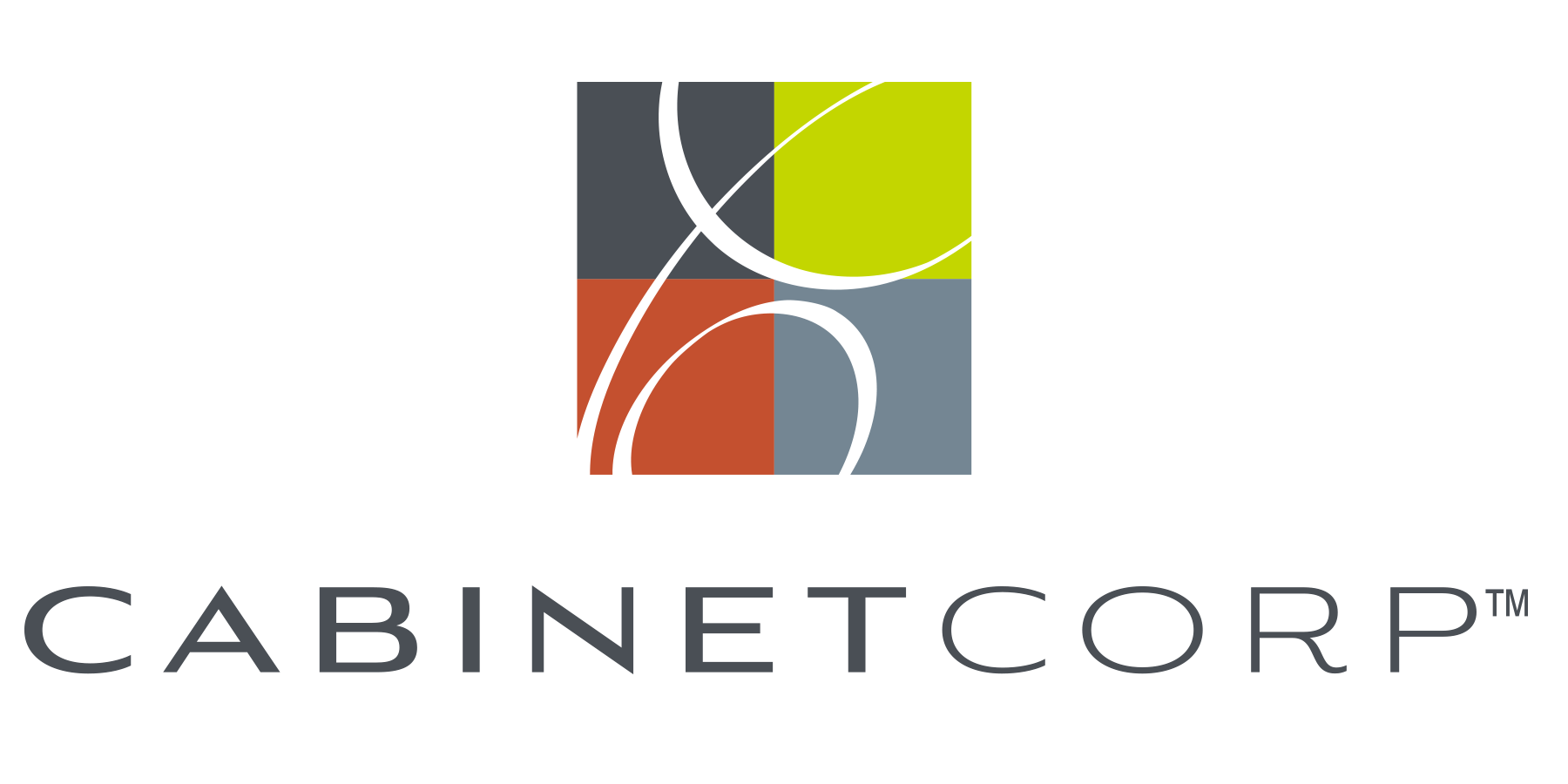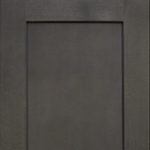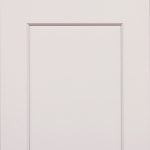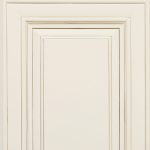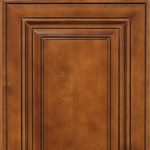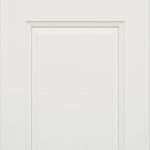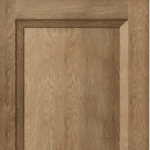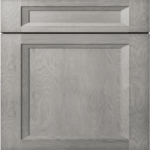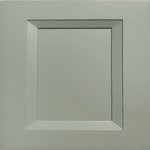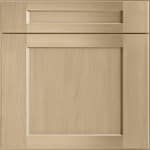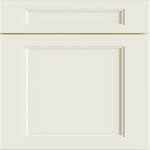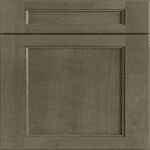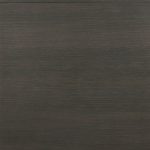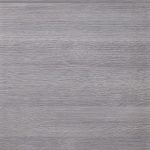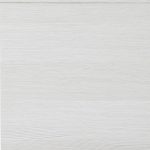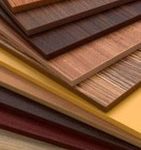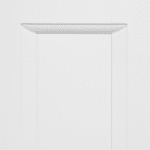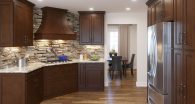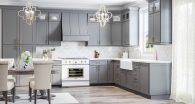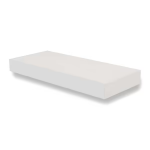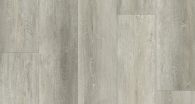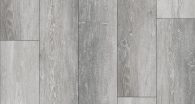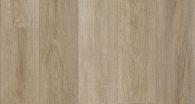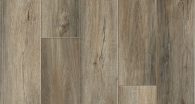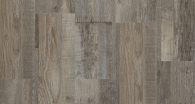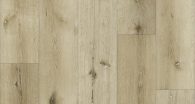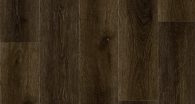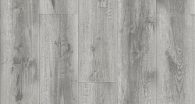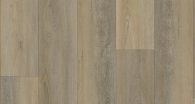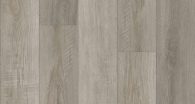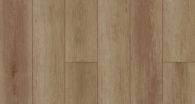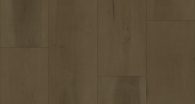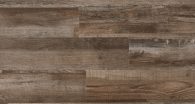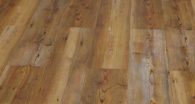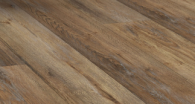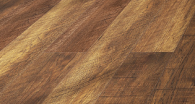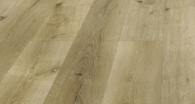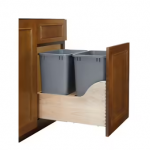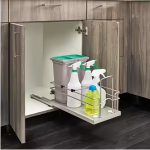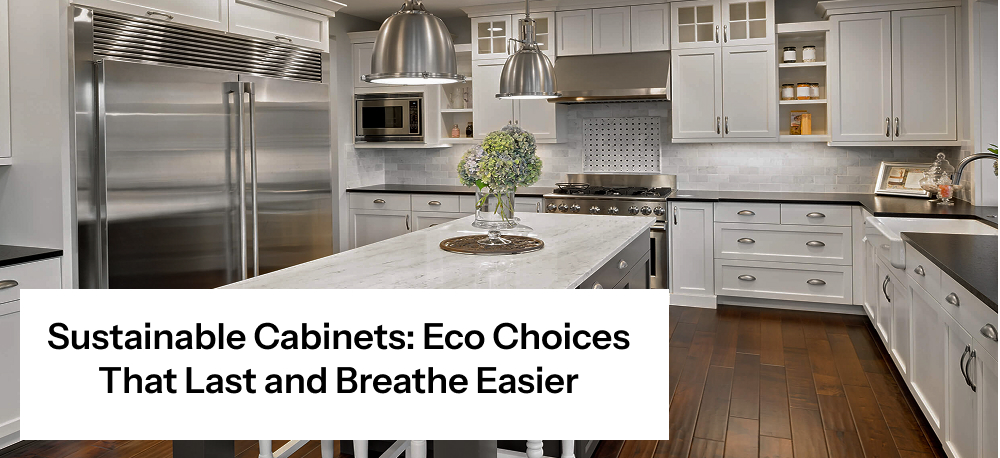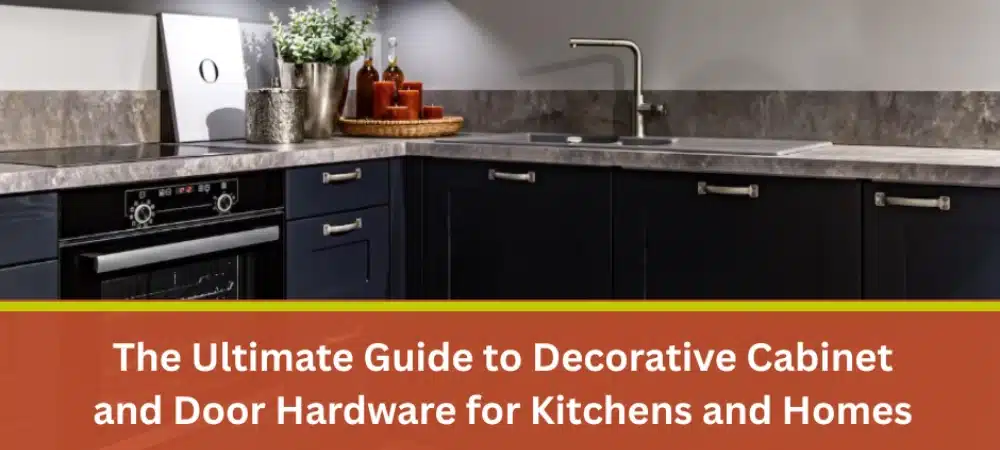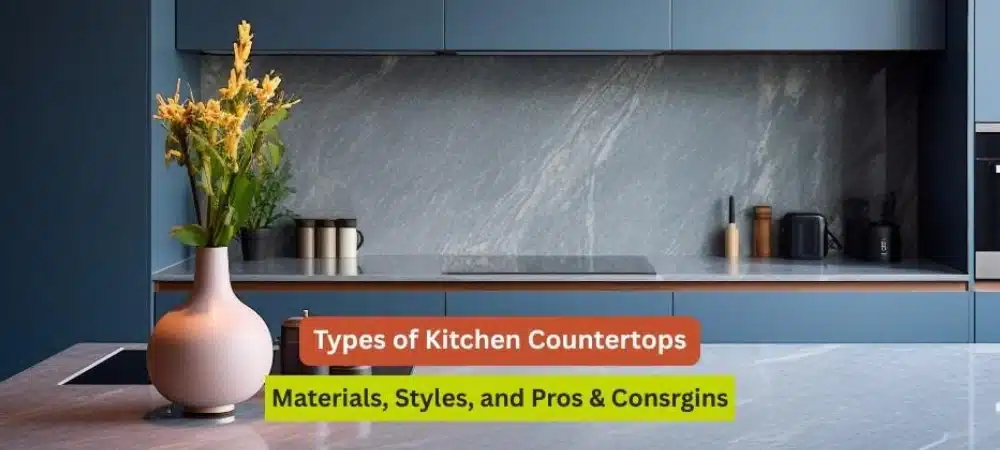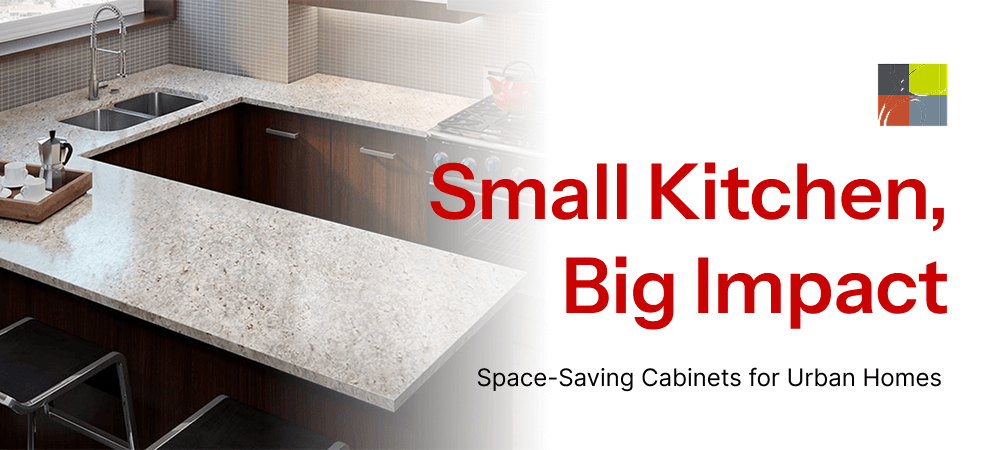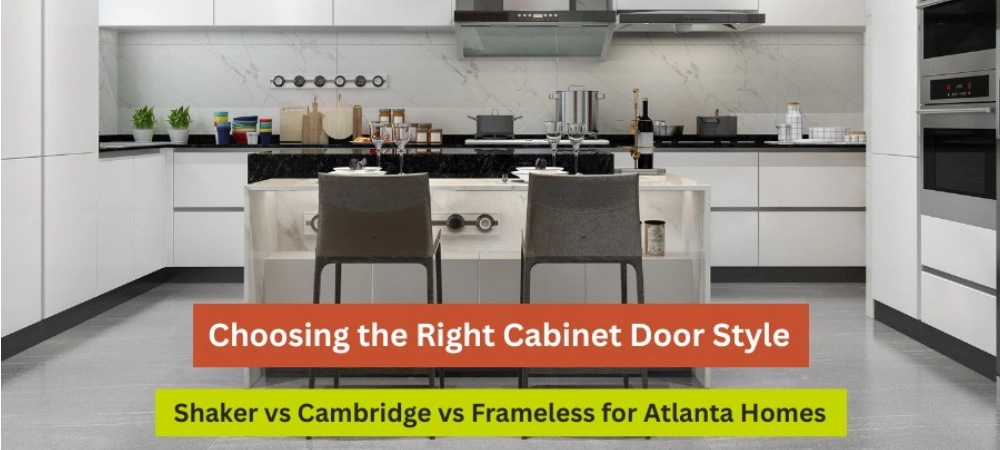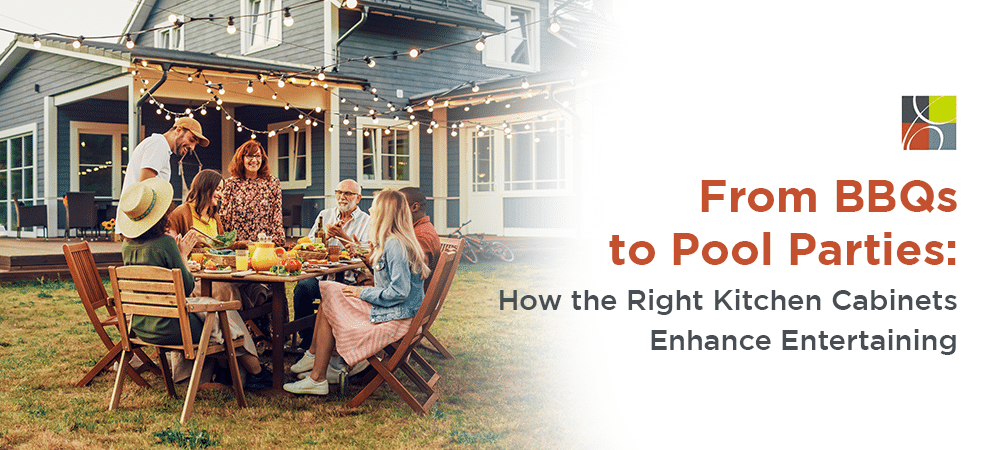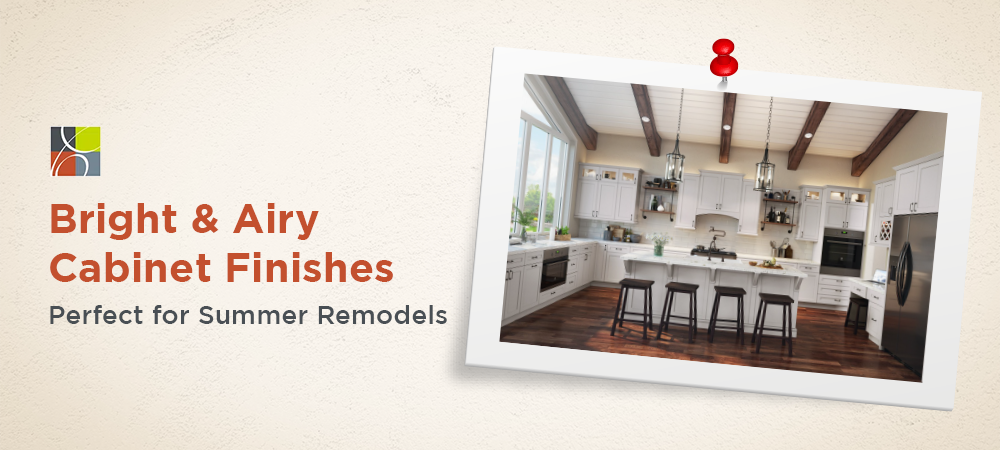Material and installation practices that lower environmental impact and improve indoor air quality.
Introduction
As homeowners place greater emphasis on indoor air quality, health, and sustainability, cabinet selection has become more than a design choice, it’s a lifestyle decision. The materials, finishes, and construction methods behind each cabinet directly impact a family’s daily living environment. Choosing sustainable cabinets made with eco-friendly cabinet materials such as low VOC cabinets and FSC plywood can reduce harmful emissions and extend cabinet life, lowering replacement frequency and environmental waste.
Many remodelers also consider certifications such as CARB2 compliance, KCMA’s Environmental Stewardship Program, or FSC-certified wood to validate eco-friendly claims. Pairing these choices with waste-reducing installation practices such as precise measuring, modular systems, and recycling leftover materials makes the entire project more sustainable from start to finish. For homeowners, these decisions mean healthier indoor air, a reduced environmental footprint, and cabinets designed to perform beautifully for decades.
Material & Finish Priorities
- Select FSC-Certified or responsibly sourced plywood and substrates that meet emissions standards.
- Choose eco-friendly cabinet materials with water-based paints and stains verified as low VOC cabinets.
- When possible, ask about adhesives and sealants to ensure they also meet low-VOC guidelines.
Installation & Waste Reduction
- Order accurate cut lists to minimize offcuts.
- Consolidate shipments to lower packaging waste.
- Recycle or repurpose demo materials where possible.
Long-term Value Consideration
Durability directly reduces replacement cycles and is one of the most effective sustainability levers in cabinetry. Construction choices such as full-plywood boxes, durable joinery (like dovetail or reinforced joints), full-extension, soft-close drawer slides, and corrosion-resistant hardware extend service life and minimize the need for early replacement. The longer the product lasts, the smaller its overall environmental impact over time. Fewer replacements mean less manufacturing energy, fewer transport emissions, and less waste to landfill.
Key benefits of prioritizing durability:
- Lower total lifecycle cost with fewer replacements and lower maintenance.
- Reduced environmental footprint, since extended service life lowers embodied carbon.
- Better daily use, with smooth drawers and reliable hinges improving satisfaction.
- Stronger resale and repurpose value, as high-quality cabinets are more likely to be reused.
Questions to Ask Suppliers
When exploring sustainable cabinets, it helps to know what to ask. Homeowners don’t need every technical document, but they can request clarity on basic materials and certifications. Some useful questions include:
- Do you offer cabinets made with FSC plywood or other certified eco-friendly cabinet materials?
- Are low VOC cabinets and finishes used in this line?
- What certifications (such as GREENGUARD, SCS, FSC, or CARB/TSCA) apply to this product?
- What warranty terms and expected service life are provided?
These questions help homeowners confirm that the products they select align with their health and sustainability priorities, without needing to review every technical sheet.
Conclusion
Sustainable cabinets are achievable through informed material choices and conscientious installation practices. Prioritizing durable construction with FSC plywood, eco-friendly cabinet materials, and low VOC cabinets ensures long-term performance and better indoor air quality. Verifying certifications where possible provides extra peace of mind. By choosing products designed to last, homeowners can protect their health, reduce costs, and minimize environmental impact, all while enjoying cabinets that add long-term value and style to their home.


